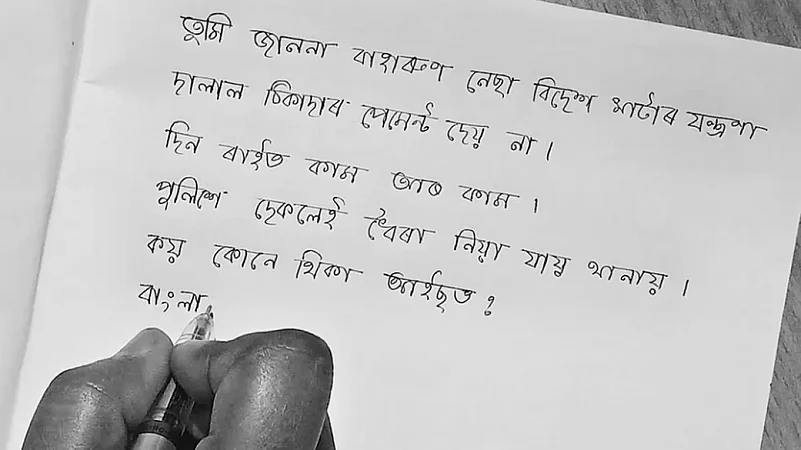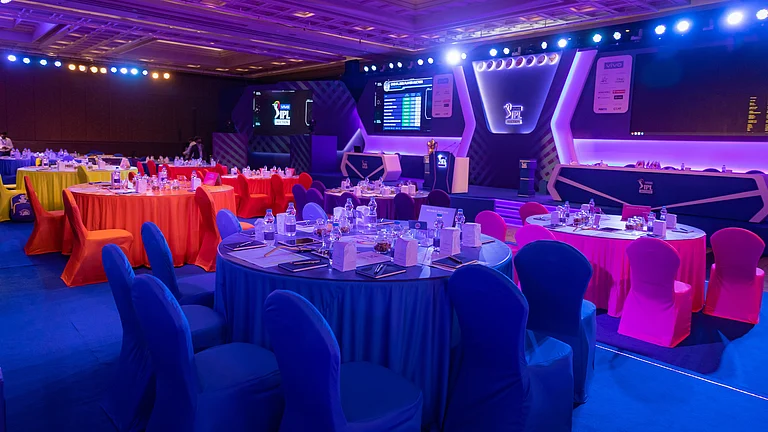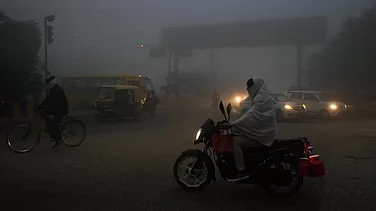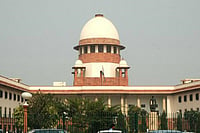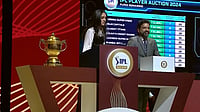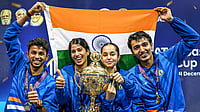A gaggle of comic artists, authors and editors are sprawled on low stools at a book-shop-cum cafe in South Kolkata engaged in a heated debate over their “baby”, a magazine -- the initial rushes of which have just come off the press – which they hope will be the first Bengali language comic strip magazine.
It’s been named ‘Com Katha’, literally meaning the language of comics, but the title is a double entendre and also means 'less spoken' in Bengali.
“We thought of a comic magazine, a space absent in Bengali literature despite a rich history of comics and cartoons in this language,” said Pinaki De, a professor of English at Calcutta University who also doubles up as a graphic designer for a number of publishers.
Bengal has a long history of comics and cartoons with Kolkata boasting of a trade in ‘Bat-tala’ (Under Banyan tree) books which were a varied range of illustrated literature that ranged from farces, erotica, mysteries, history, etc. printed onto cheap flimsy papers from woodcuts in the 19th century.
The first cartoon magazines – 'Harbola Bhar' (Mimic) and 'Basantak' (Spring) -- which poked fun at both Bengal’s society and the politics of the English rulers -- came out in 1873 and 1874 respectively.
Legendary comic artist Narayan Debnath launched his popular comic strip ‘Handa Bhoda’ (Stupid & Stupider) in 1962 with the children’s magazine ‘Shuktara’ (Morning Star) and his folksy local superman with a 40-inch chest ‘Batul the Great’ in 1965 with Batul twisting Patton tank guns like putty.
Ananda Publishers (part of the ABP group) made history in this century when they launched comic books based on Satyajit Ray’s popular detective Feluda in a bid to breathe new sales into one of the best-selling series of adolescent books in the Bengali language.
“Comics came out mostly as part of a magazine or even as comic books based on a single character but a magazine devoted to multiple comic strips by various artists or authors was always lacking, so we thought we needed to create a platform and that is where Com Katha, a collective of 17 artists, 4 writers and 3 editors has come in,” said De.
Well-known creators of Bengali comics – Shankha Banerjee, Sujog Bandyopadhyay and Harsha Mohan Chattaraj - are rubbing shoulders with younger artists in this labour of love.
While Bengal’s comic industry can hardly compete with Japanese, Franco-Belgian and American (the first issue of the quarterly Com Katha will have a print run of just 2,000), the artists hope their pre-Durga Puja endeavour will bear fruit.
“We see a great demand in suburban towns where the interest in graphic novels is greater than that in Kolkata where the net-based entertainment culture is stronger,” said Pritam Sengupta, the marketer for Com Katha, adding, “But then, this is a new offering, the challenge lies not just in bringing it out but in sustaining it”.
Swaptadip De Sarkar, a well-known artist in his mid-40s, who created a character ‘Paglu’ (slang for eccentric), is one of those who have joined the consortium.
“I wanted to create a character in Bengali for audiences across the world and Paglu and his dog come with some humour but also a bit of social messaging,” said Sarkar.
Graphic artist Tirthankar Bandyopadhyay, grandson of the famous author Bibhutibhushan Bandyopadhyay whose Pather Panchali is considered a classic has also sent in a comic strip for the new magazine.
“I am thinking of how to bring out characters from my grandfather’s creations onto comic strips. His well-known adventure – Chander Pahar (Moon Mountain) – has already been made into a popular movie and a comic book. However, there is scope for more work,” said Tithankar.






